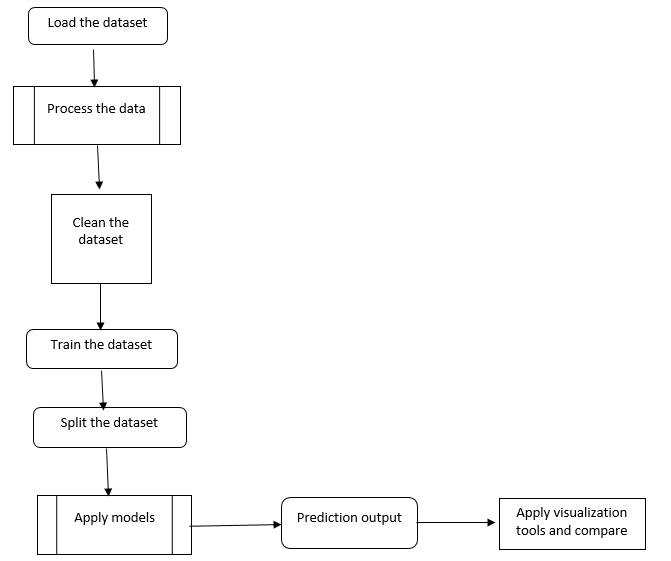An Adaptive Technique for Crime Rate Prediction using Machine Learning Algorithms
Main Article Content
Abstract
Any country must give the investigation and preventive of crime top priority. There are a rising amount of cases that are still pending due to the rapid increase in criminal cases in India and elsewhere. It is proving difficult to classify and address the rising number of criminal cases. Understanding a place's trends in criminal activity is essential to preventing it from occurring. Crime-solving organisations will be more effective if they have a clear awareness of the patterns of criminal behavior that are present in a particular area. Women's safety and protection are of highest importance despite the serious and persistent problem of crime against them. This study offers predictions about the kinds of crimes that might occur in a particular location using ensemble methods. This facilitates the categorization of criminal proceedings and subsequent action in a timely manner. We are applying machine learning methods like KNN, Linear regression, SVM, Lasso, Decision tree and Random forest in order to assess the highest accuracy.
Article Details
References
Y. Rayhan and T. Hashem, "AIST: An interpretable attention-based deep learning model for crime prediction", arXiv: 2012.08713, 2020.
M. Feng, J. Zheng, J. Ren, A. Hussain, X. Li, Y. Xi, et al., "Big data analytics and mining for effective visualization and trends forecasting of crime data", IEEE Access, vol. 7, pp. 106111-106123, 2019.
S. Sathyadevan, M. S. Devan, and S. Surya Gangadharan, “Crime analysis and prediction using data mining,” 1st Int. Conf. Networks Soft Comput. ICNSC 2014 - Proc., pp. 406–412, 2014, doi: 10.1109/CNSC.2014.6906719.
Farhad Khoshbakht, Atena Shiranzaei, S. M. K. Quadri. (2023). Design & Develop: Data Warehouse & Data Mart for Business Organization. International Journal of Intelligent Systems and Applications in Engineering, 11(3s), 260–265. Retrieved from https://ijisae.org/index.php/IJISAE/article/view/2682.
M. C. Bishop, ‘‘Multi-layer perceptron,’’ in Neural Networks for Pattern Recognition. Oxford, U.K.: Oxford Univ. Press, 1995, pp. 116–163.S.
Yadav, M. Timbadia, A. Yadav, R. Vishwakarma and N. Yadav, “Crime pattern detection, analysis & prediction,” 2017 International conference of Electronics, Communication and Aerospace Technology (ICECA), 2017, pp. 225-230, doi: 10.1109/ICECA.2017.8203676.
Sukumar P, Robert L, “A Probe on Crime Data in Various Domains, “International Journal of Recent Technology and Engineering, ISSN: 2277-3878, vol. 8(6), pp. 3940-3948, Mar. 2020, doi: 10.35940/ijrte.F8951.038620.
Ms. Sweta Minj. (2012). Design and Analysis of Class-E Power Amplifier for Wired & Wireless Systems. International Journal of New Practices in Management and Engineering, 1(04), 07 - 13. Retrieved from http://ijnpme.org/index.php/IJNPME/article/view/9.
2020 IEEE Technology & Engineering Management Conference (TEMSCON) “Crime Analysis Mapping, Intrusion Detection Mining “.
R.M. Aziz, p. Sharma and A. Hussain, “Machine learning based soft computing regression analysis approach for crime data prediction, ”Karbala International Journal of Modern Science,vol.8,no. 1, pp. 1-19,2022.
Joseph Miller, Peter Thomas, Maria Hernandez, Juan González, Carlos Rodríguez. Exploring Deep Learning Models for Decision Science Applications. Kuwait Journal of Machine Learning, 2(3). Retrieved from http://kuwaitjournals.com/index.php/kjml/article/view/198.
S. Ramasubbareddy, T. A. S. Srinivas, K.Govinda and S. S. Manivannan, “Crime prediction system, “Innovations in Computer Science and Engineering,vol. 103,no.3,pp. 127-134,2020.
S. Rishabh, R. Rishabh, K. Vidhi and C. Prathamesh,”K-means clustering analysis of crimes on Indian Women,” Journal of Cyber Security and Information Management (JCIM) ,vol. 4, no. 1,pp. 5-25,2020.

